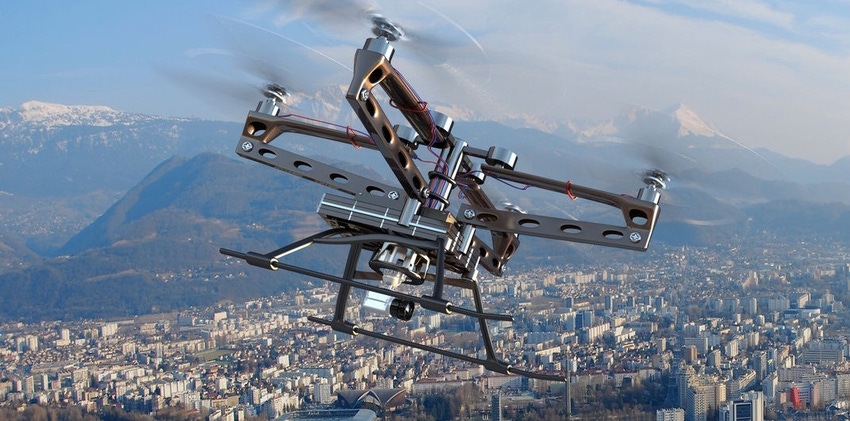AT&T has announced it has almost completed its first phase of research and development in the big, wide world of drones.
May 8, 2017

AT&T has announced it has almost completed its first phase of research and development in the big, wide world of drones.
The technology itself promises to add another dimension to our world, with robots hovering above our heads carrying a host of new business opportunities. Whether it is surveillance, temporary connectivity, filming sporting events or delivering pizza, the possibilities has had entrepreneurs looking upwards in an effort to make a bit of extra cash. It’s an industry which is expected to boom as the Federal Aviation Administration estimates 1.6 million drones might be in the skies by 2021 in the US alone.
“Drone delivery may sound far-fetched, but it is real,” said Matt Walsh, Director of Product Marketing Management of Internet of Things Solutions group at AT&T. “The stage is being set for it to happen. By 2025, network connectivity for drones has been estimated by some to become a billion-dollar business.”
Walsh believes the prospect of drones in the sky has the potential to disrupt the way networks are designed and managed in a similar fashion to the smartphone revolution. In truth, the explosion of smartphones caught companies like AT&T by surprise, but at least it would appear to be a lesson learned.
AT&T Technology and Operations and Internet of Things Solutions have been working in collaboration with AT&T Foundry, to test how the network could support drones; connectivity can’t be taken for granted with large metal objects flying metres above people’s heads.
The team are attaching smartphones to drones across the US and measuring how the devices interacts with the network on the ground and in the air, at various heights from a couple of metres to a couple of hundred feet. It sounds like a simple task, but considering how much space is above us, mapping the skies is a big task.
“The popularity of the smartphone caught everybody off guard,” said Walsh. “We had to scale our network capabilities to support that overnight. We are taking an early position for drones and taking action.
“We are learning a lot through our testing on the LTE network and we’re exploring ways to optimize these services – before the demand for drones really takes off.”
Elsewhere, Qualcomm has also been testing drones on its commercial 4G LTE networks at the Qualcomm UAS Flight Center in San Diego, specifically look at key performance indicators such as coverage, signal strength, throughput, latency, and mobility.
The field trial demonstrated that LTE networks can support safe drone operation in real-world environments, claiming that existing commercial cellular networks can provide coverage to drones at low altitudes up to 400 feet above ground level.
Existing networks can support the growth of drones, though LTE Evolution will take this to the next level to improve interference mitigation techniques and power control optimization. More work need to be done however on cell selection algorithms to better help ensure drones select the strongest serving cell, resulting in improved signal-to-noise ratio and optimized network capacity.
About the Author(s)
You May Also Like








.png?width=300&auto=webp&quality=80&disable=upscale)


_1.jpg?width=300&auto=webp&quality=80&disable=upscale)


.png?width=800&auto=webp&quality=80&disable=upscale)